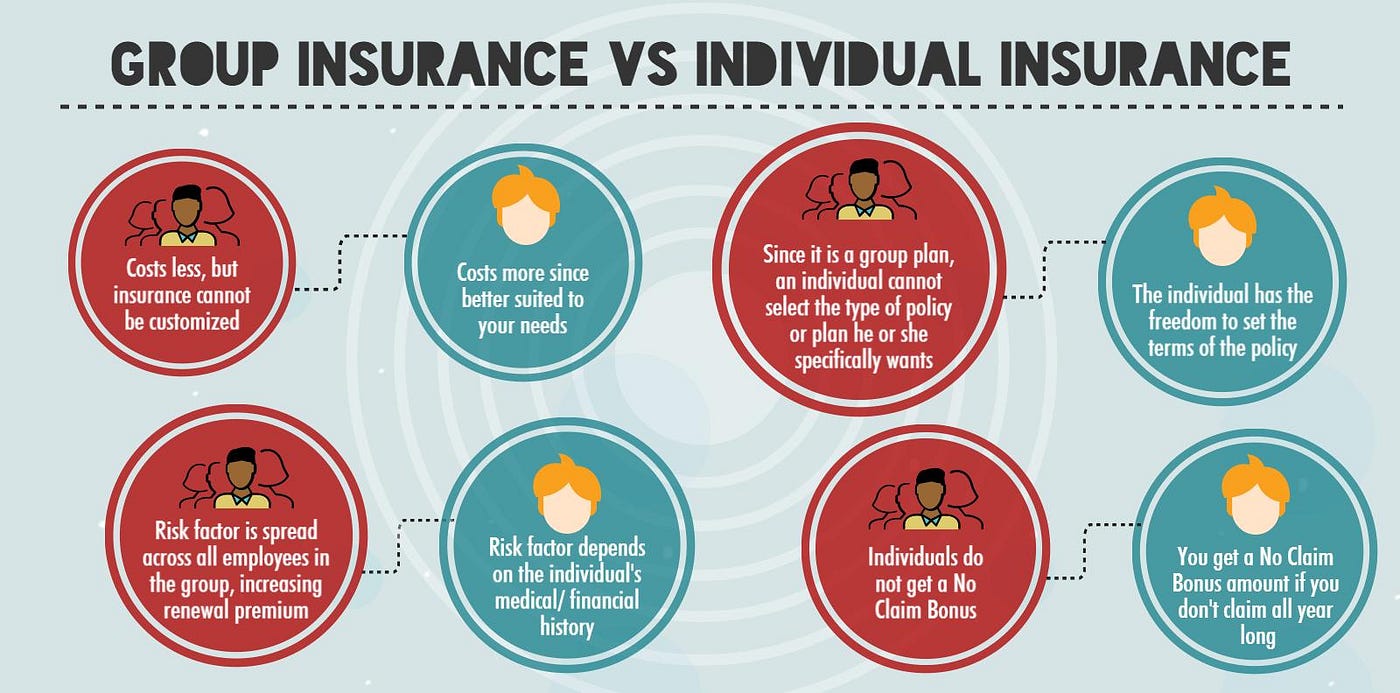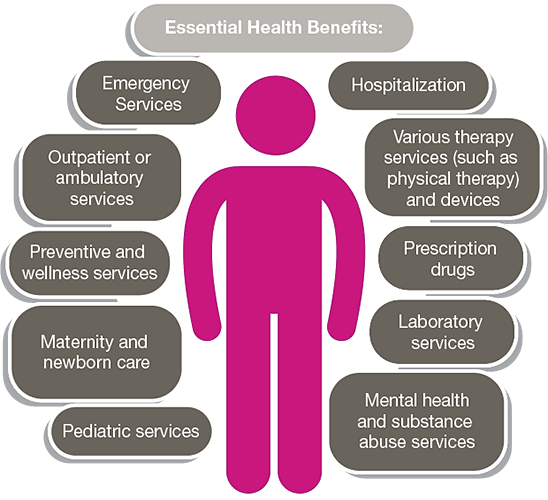4 Simple Techniques For Medicare Advantage Agent
4 Simple Techniques For Medicare Advantage Agent
Blog Article
The Ultimate Guide To Medicare Advantage Agent
Table of ContentsThe Ultimate Guide To Medicare Advantage AgentUnknown Facts About Medicare Advantage AgentThe 2-Minute Rule for Medicare Advantage Agent

adheres to from confusing the relatively young age profile of the uninsured with the far better wellness, generally, of more youthful persons. This covers the link between health condition and wellness insurance coverage. For those without accessibility to office health and wellness insurance, inadequate health is a possible barrier to purchasing nongroup insurance coverage because such coverage might be highly valued, omit pre-existing conditions, or be simply inaccessible. The variety of uninsured Americans is not especially large and has not changed in current years. Seven out of ten respondents in a country wide representative survey believed that less Americans did not have health insurance policy than actually do(Fronstin, 1998). Approximately fifty percent(47 percent )believed that the variety of people without medical insurance decreased or stayed continuous over the last fifty percent of the last decade(Blendon et al., 1999). This drop of nearly 2 million in the variety of people 'without insurance policy (a reduction
of around 4 percent)is certainly a positive change. With a softer economy in 2000 the most current reported gains in insurance coverage may not continue(Fronstin, 2001 ). The decrease in the number of uninsured will not proceed if the economic situation continues to be slow-moving and health treatment prices remain to outmatch rising cost of living. This is due to the fact that the information were accumulated for a duration of solid economic efficiency. Of the estimated 42 million people who were uninsured, all but about 420,000(about 1 percent)were under 65 years old, the age at which most Americans come to be qualified for Medicare; 32 million were grownups between ages 18 and 65, around 19 percent of all adults in this age group; and 10 million were youngsters under 18 years old, regarding 13.9 percent of all kids (Mills, 2000). These quotes of the number of persons uninsured are created from the yearly March Supplement to the Present Populace Study (CPS), performed by the Census Bureau. Unless otherwise kept in mind, national price quotes of people without medical insurance and proportions of the population with various sort of insurance coverage are based upon the CPS, one of the most widely utilized resource of estimates of insurance policy protection and uninsurance prices. These studies and the quotes they generate are explained briefly in Table B. 1 in Appendix B - Medicare Advantage Agent. These studies differ in size and tasting techniques, the inquiries that are inquired about insurance coverage
The Of Medicare Advantage Agent
protection, and the time period over which insurance coverage or uninsurance is gauged(Lewis et al., 1998, Fronstin, 2000a ). Still, the CPS is particularly useful due to the fact that it generates annual quotes reasonably rapidly, reporting the previous year's insurance policy protection estimates each September, and because it is the basis for a regular collection of price quotes for greater than twenty years, permitting for analysis of patterns in insurance coverage with time.

How Medicare Advantage Agent can Save You Time, Stress, and Money.
Over a three-year period beginning early in 1993, 72 million people, 29 percent of the U.S. populace, were without coverage for a minimum of one month. Within a read what he said single year(1994), 53 million individuals experienced at the very least a month without protection(Bennefield, 1998a). 6 out of every 10 uninsured grownups are themselves employed. Although functioning does enhance the possibility that one and one's member of the family will certainly have insurance policy, it is not a warranty. Also members of households with 2 full-time wage income earners have virtually a one-in-ten chance of being uninsured (9.1 percent without insurance rate)(Hoffman and Pohl, 2000 ). The connection in between medical insurance and access to care is well established, as recorded later on in this phase. Although the relationship between health and wellness insurance policy and health results is neither direct neither basic, a comprehensive scientific and health services research study literature web links health insurance protection
to better accessibility to care, far better quality, and improved personal and population health status. The second record, on personal health end results for without insurance adults, is represented by the inner circle of the figure, while the third report, on family wellness, includes the subjects of the 2nd record however emphasizes a various unit of evaluation, particularly, the family. The sixth report in the collection will certainly provide info about approaches and efforts embarked on in your area, statewide, or nationally to address the lack of insurance policy and its negative impacts. Degrees of analysis for checking out the impacts of uninsurance. This discussion of medical insurance protection focuses primarily on the united state populace under age 65 since basically all Americans 65 and older have Medicare or other public coverage.
It concentrates particularly on those without any type of wellness insurance coverage for any type of length of time. The issues dealt with by the underinsured are in some aspects comparable to those encountered by the uninsured, although they are usually less severe. Uninsurance and underinsurance, however, involve distinctly different plan concerns, and the methods for addressing them may vary. Throughout this study and the five reports to follow, the major emphasis gets on persons without any health and wellness insurance policy and therefore no support in paying for healthcare beyond what is readily available via charity and safeguard institutions. Health insurance policy is an effective element affecting invoice of care since both clients and doctors reply to the out-of-pocket rate of services. Medical insurance, nevertheless, is neither essential neither adequate to access to clinical services. The independent and direct result of wellness
insurance coverage on access to health health and wellness is well established. Others will certainly get the wellness care they require even without medical insurance, by spending for it out of pocket or seeking it from service providers who provide care free or at extremely subsidized prices. For still others, health insurance alone does not guarantee invoice of care as a result of various other nonfinancial obstacles, such as an absence of wellness care companies in their community, limited access to transport, illiteracy, or linguistic and cultural distinctions. Official study regarding uninsured populations in the United States dates to the late 1920s and very early 1930s when the Committee on the Price of Healthcare created a collection of records regarding funding physician office check outs and hospital stays. This concern became prominent as the numbers of clinically indigent climbed up throughout the Great Clinical depression. Empirical studies constantly sustain the web link in between accessibility to care and boosted health results(Bindman et al., 1995; Starfield, 1995 ). Having a regular source of care can be considered a predictor of access, instead of a direct step of it, when health and wellness results are themselves utilized as access moved here indicators. This extension of the notion of access measurement was made by the IOM Committee on Checking Accessibility to Personal Wellness Treatment Provider(Millman, 1993, p. Whether moms and dads are guaranteed appears to affect whether or not their youngsters obtain treatment in addition to exactly how much careeven if the youngsters themselves have insurance coverage(Hanson, 1998). The wellness of moms and dads can influence their capacity to take care of their children and the level of family stress. Fretting regarding their youngsters's access to care is itself a source of stress for moms and dads. Three chapters comply with in this record. Phase 2 offers an overview of just how employment-based wellness insurance, public programs and specific insurance policy policies run and communicate to provide substantial however incomplete insurance coverage of the U.S. populace. This consists of an evaluation of historic patterns and public laws impacting both public and private insurance coverage, a conversation of the communications among the various kinds of insurance, and an exam of why people relocate from one program to one more or end up

Report this page